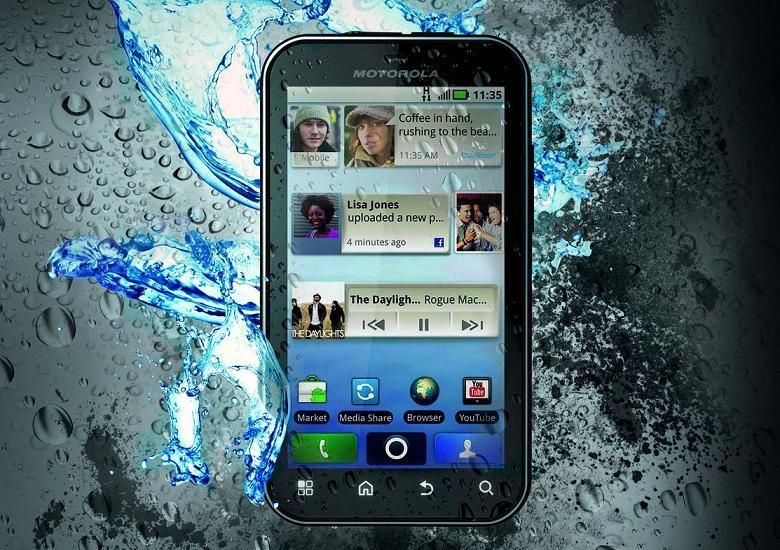There’s little a smartphone company can do that’s more frustrating than blaming an issue with one of its products on its users. Probably the most well-known case of this was the response from Apple to users complaining of poor reception from the iPhone 4 during the Antennagate scandal by insisting that the issue was with users who were holding the phone “wrong.”
That said, there’s a growing trend among smartphones to implement some degree of waterproofing or water resistance. On the surface, that sounds great, but if you’re rejoicing at this news because you regularly find yourself losing smartphones to water damage, I’ve got no qualms in saying it: you’ve been doing it wrong.
After all, a smartphone isn’t like a pair of boots that will be regularly exposed to the elements, a wristwatch we might want to wear while swimming, or a painting that’s going to be exhibited outdoors. In regular use, smartphones aren’t exposed to water, so why waterproof them?
But wait a minute – what’s the harm of waterproofing? If a company can do it, why not do it as a kind of insurance? Sure, you don’t intend to drop your phone in a toilet, but what if it just slips out of your pocket one day and drops right in? Well, obviously you need to throw it right out, because it was briefly in the toilet – no, really, I’m sympathetic to that just-in-case argument, but I’ve still got a few problems with it. Let’s take a look at them.
Waterproofing Isn’t Without Cost
Companies have been making water-resistant phones for years. They’re huge in Japan, and I can’t even count how many times over the years I saw this feature mentioned on a spec sheet for a smartphone never intended to leave the land of the rising sun. But it’s only now that the feature feels like it’s making inroads on the West, both as a confirmed part of handsets like the Xperia Z and a rumored one for many upcoming models.
If we’ve been able to waterproof phones for so long, why haven’t we been doing it more? Well, even though waterproofing sounds like a low-cost, passive, easy-to-implement feature, it’s not without its trade-offs. From external handset design to circuit-board layout, waterproofing concerns are going to follow a smartphone through many steps of its development. They can force a manufacturer’s hand when it comes to certain choices, and limit the materials that could be considered. It also creates a headache for the assembly process, as this isn’t exactly a feature that’s easy to non-destructively test.
So, while the buyer might only see the expense of waterproofing as a few cents for a rubber gasket, it can be far greater, and those development and manufacturing costs get passed right along to the consumer.
Reasons For A Waterproof Phone
I considered making this section “you live on a boat” in its entirety and just moving on, but that would both be more than a little unfair and ignore some other good reasons for waterproofing. Like I said, there aren’t many good reasons, but that means that there are some.
A phone that can shoot video underwater is cool, and if you want to get some pictures of your family on vacation at the beach, a waterproof phone might be just the ticket.
What confuses me, though, is that with things like digital still or video cameras – portable electronics where waterproofing would arguably be an even more valuable feature than on a general-purpose smartphone – water resistance is still seen as a niche feature rather than one that’s pushing its way into the mainstream. That sort of brings me to my problem:
My Issue With Waterproofing (As A Common Smartphone Feature)
I’m quite aware of the risk I’m taking here of venturing into grumpy old man you-kids-today-don’t-appreciate-anything territory, but I think one big reason smartphone waterproofing is seen as so desirable is because we don’t want to have to be so careful with our expensive electronics; it’s a license to be negligent, to an extent.
But why is that so bad? If we want a waterproof phone we can use as coaster, why shouldn’t we have one? For all the protections we can offer our electronics, whether that’s waterproofing, dustproofing, or just heavy-duty ruggedizing it against damage from impacts, they’re never going to be full-on indestructible. As a result, when we start taking these sort of things for granted, we’re lowering the bar for what sort of personal responsibility we feel towards the need to keep our phones in tip-top shape.
How long before smartphone users accustom to waterproof handsets find some new way to ruin their phones – dunking them in acidic soda or mucking them up with maple syrup – and acting all innocent and confused when that gummed-up hardware doesn’t function properly?
Perhaps I just lack a certain degree of faith in smartphone users showing common sense, but this could very well be a slippery slope.
Maybe ubiquitous waterproofing is inevitable – just the tide of progress. Still, any time that technology takes away some personal responsibility, it’s going to make me uneasy. Perhaps we’d be better off if waterproofing remained a special feature on a few select models, rather than something anyone could end up taking for granted.

